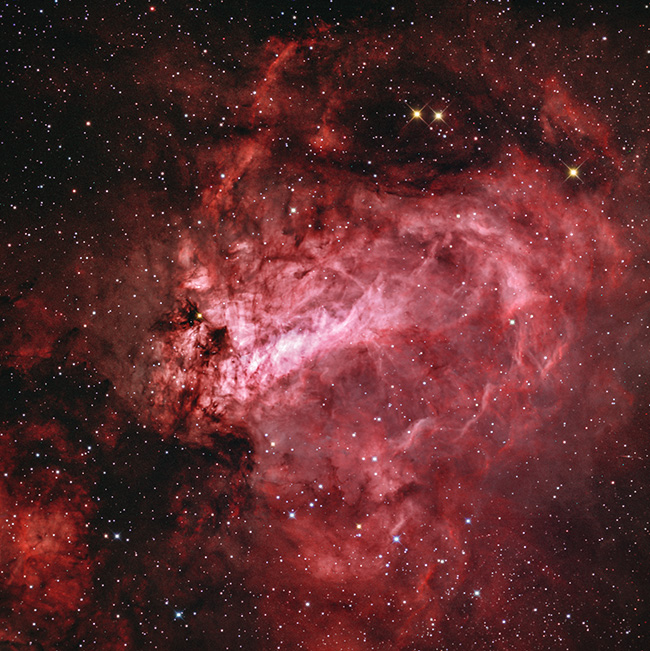
|
Object: Messier 17 (NGC 6618)
Date: Aug. 10-16-17, 2023 - Location: DSOC, Fort Davis, TX
Click on the image to view at higher resolution. |

|
M17 (NGC 6618), also called the Swan Nebula and sometimes the Omega Nebula, is a region of new star formation. This impressive celestial object shines brightly due to excited emissions caused by the high-energy radiation of young stars[1]. Unlike many other emission nebula, these stars are not obvious in optical images as they are hidden within the nebula[1]. Star formation is either still active in this nebula, or has ceased very recently[1]. A small cluster of about 35 bright, but obscured, stars seems to be imbedded in the nebulosity[1]. The color of the nebula is predominately reddish, with some graduation to pink. This color comes from hot hydrogen gas excited to shine by stars lying within the nebula[1]. The nebula contains a large amount of dark obscuring material comprised of dust and cold gas. The mass of the gas and dust in the Swan Nebula is estimated to be about 800 times that of the Sun[2]. While the bright nebula is roughly 15 light years across, the total gaseous cloud, including low-luminosity material, extends to at least 40 light years[2]. M17 lies in the constellation Sagittarius at an estimated distance of 5,000 to 6,000 light years[2]. The image above was captured using Ha and OIII Narrowband filters. The image was assembled by mapping Ha to red and OIII to blue and green. The stars were overlaid with data from a red, green, and blue filtered image. This method of assembly produces a near true color image. A full narrowband Hubble Palette version of the image may be viewed here.
References
|